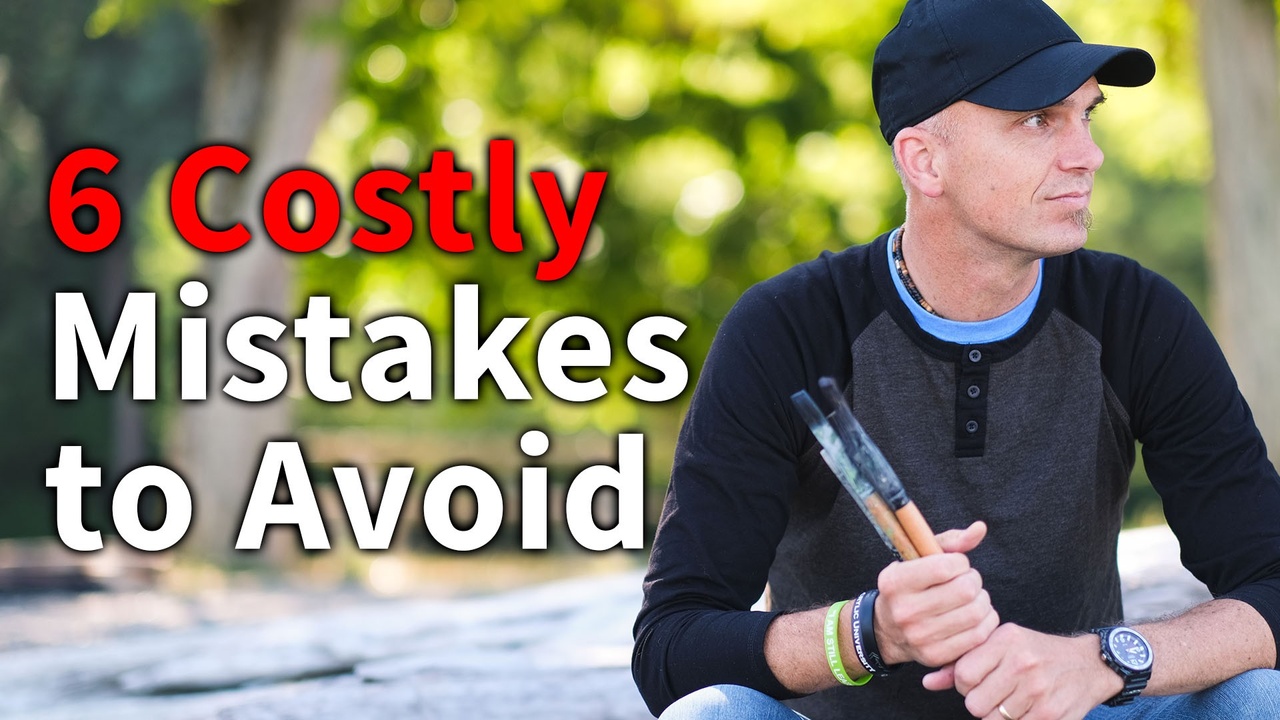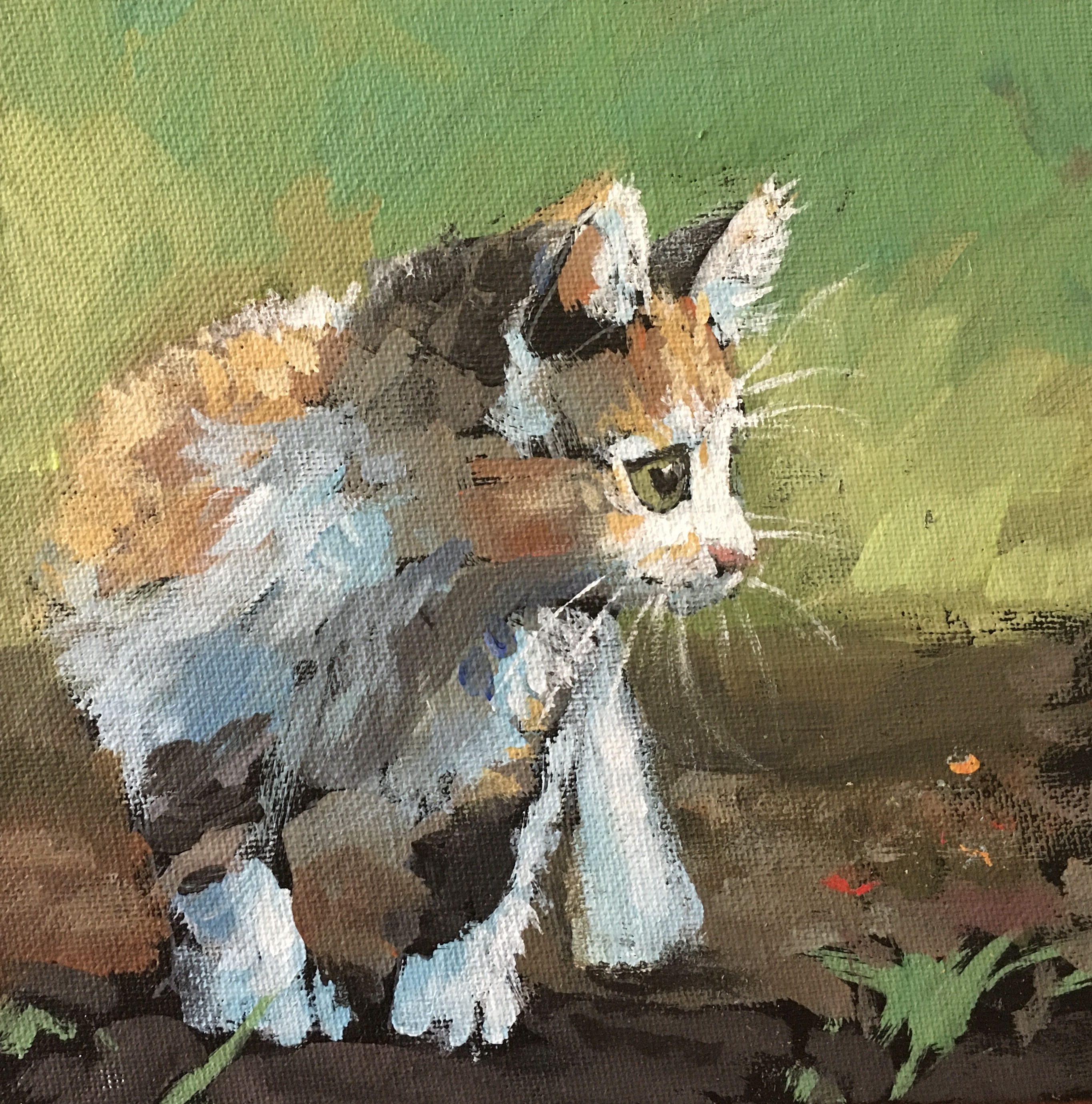Six Costly Mistakes to Avoid as an Artist!

Over the years, I've seen artists make a lot of costly mistakes. I have learned from these mistakes, and I want to share six tips on how you, beginner or not, can avoid them.
Mistake #1: Ignoring Design
One of the biggest differences between a mediocre painting and a great painting is often just design. If you take just a few minutes before you start your painting process to work out a good design in a thumbnail sketch, it can save you hours of frustration that you might experience if you don't have a design. In doing this, you will also save paint and canvases, which saves you money. It's worth it to take a few minutes, to sketch a few ideas, before you start painting. You will not only have better paintings because of it, but you will also be happier with the process, and you will grow faster.
For example, this is a scene I did in which tweaking the design resulted in a much stronger scene overall. Here's the article I wrote where I talk more about this specific scene and my thought process behind tweaking it.

Mistake #2: Painting Too Big Too Early
As a beginner artist, you want to paint as many paintings as possible. This is what helps you grow. So, if you can paint five different paintings in the same amount of time it takes you to paint one big one, you'll grow more painting those five smaller paintings. Every time you start and finish a painting, you complete a process. That means that when you paint those smaller paintings, you will work through problems and discover solutions five times instead of just once. If your goal is to grow quickly as an artist, then paint small and paint often.
That's one of the many reasons we created the mini painting challenge - a year long challenge to paint once a week. Hundreds of artists have taken it and thoroughly benefitted from it. We accept new participants one in December and once in the spring. Keep an eye out for it!

Mistake #3: Using Too Many Colors
Having too many colors to choose from complicates your decision-making process. My recommendation is to use six colors: two yellows, two reds, two blues, plus white and black. If you'd like, you can even simplify it more by choosing just one of the yellows, reds and blues. By using a limited palette when you're painting, you'll learn how to mix colors together and you'll learn how the colors work together. In addition to saving you paint and money, a limited palette gives your painting an automatic color harmony.
Here's what my palette looks like most of the time:

Mistake #4: Using Too Small Brushes
Many painters have come to me wondering how to paint looser and how to get big, bold brush strokes. The easiest way to accomplish this is by avoiding the use of small paint brushes. The system I suggest you follow is picking up your biggest paint brush and using it for as long as you can. Once you feel like you can't do anymore with it, pick up your second largest paint brush and do the same thing. Follow that pattern through your painting and only use your smallest paint brush at the end. This automatically helps you gain a more painterly, loose feeling to each and every painting. Most of the time I use a pretty large brush for my paintings. Here's a video where I talk more about the brushes I use. We talk about why using a big brush helps you paint more loosely in this article.
Mistake #5: Trying to be Perfect
This mistake is more about mindset than it is about tools or technique. If you're trying or wanting to be perfect, it's going to make you procrastinate. If you procrastinate, you might end up paralyzed with fear. You have to let go of your perfectionist tendencies. The next time you are standing in front of your canvas, stuck with fear, just grab one of your biggest paint brushes, dip it in any color of paint and put a bold, abstract mark on your canvas. By making such a bold and audacious brush stroke right at the beginning, you can kick your fear in the rear end and your next brush strokes will feel much easier.
Mistake #6: Not Investing in Yourself
If you want to grow as an artist, the best thing you can do is invest in yourself. I'm a fourth-generation artist and have been surrounded by art my entire life. It wasn't until I started taking workshops and learning from other artists who were further down the road that I really grew as an artist. If you want to grow as an artist to the point where you can enjoy the painting process and be happier with the end product, then you need to do two things.
- First, you need to get rid of the pride that is telling you that you don't need any help.
- Secondly, you need to value yourself. You are worth the investment. You have creative potential inside of you that simply needs to be unlocked. You just need a little guidance, so you can grow and experience things to help bring forth the creativity that is inside of you.
- Thirdly - and this is something that Dianna Shyne says all the time - invest in artist quality paints even though they're expensive. Would you train a child to play the piano by giving them a Fisher Price keyboard? Absolutely not! Student grade paints behave much differently than artist grade ones. Set yourself up for success and get those nice paints.
There you have it, the six costly mistakes I see a lot of artists make. I hope this blog will help you avoid them!
Stay connected with news and updates!
Join our mailing list to receive the latest news and updates from our team. You're information will not be shared.

